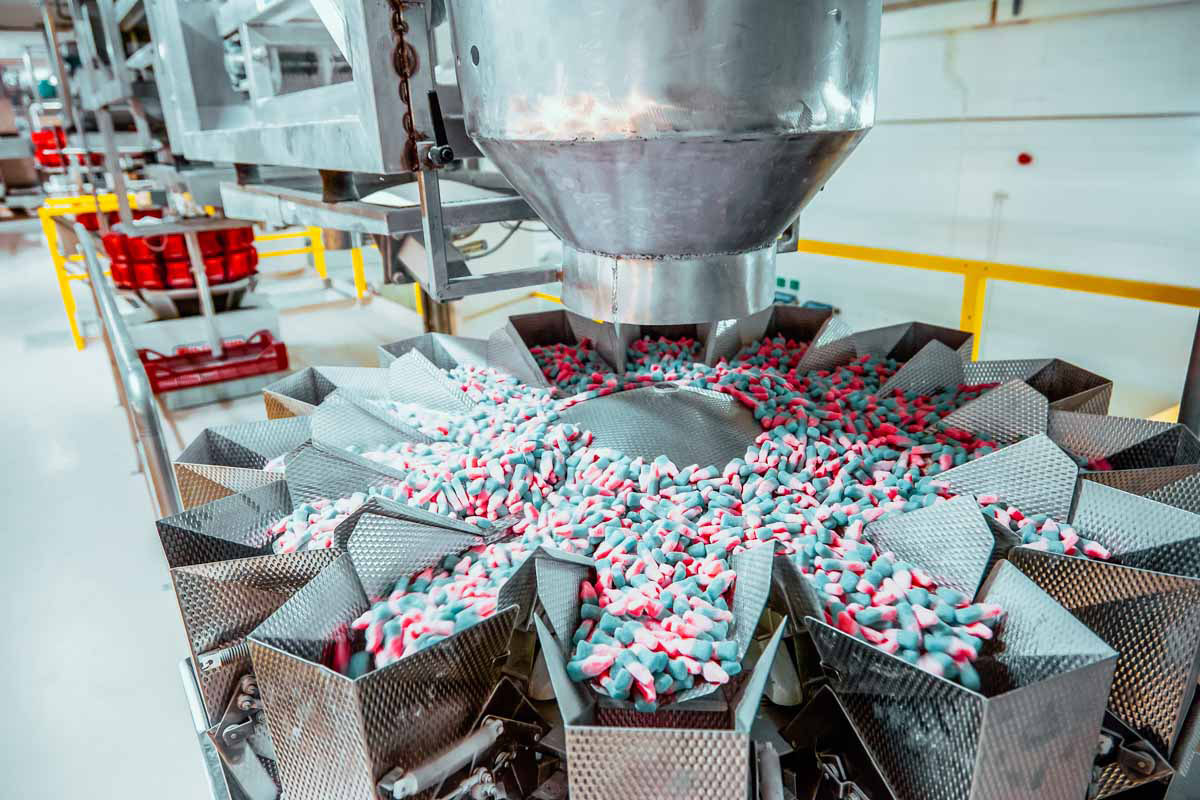Every manufacturer wants to produce optimally in the best possible, cost-effective way. An important element within Objective MES that can secure this, is production scheduling. With this functionality, it is possible to plan production orders on the production lines at certain moments and also to follow the whole progress in real time. Production scheduling gives the freedom to determine the sequence of the orders yourself. Thus planning is represented on a graphic scheduling board that you as user can adapt to your own needs.
Production scheduling, the benefits
Real time overiew
Real time is an important concept in the food and beverage industry. With production scheduling it is possible to keep a real time overview of production progress, and follow the status of your production orders in real time.
A real-life example: you need a certain mould to make specific sweets and you only have 1 mould available for this. But that specific mould is needed for 2 production orders. In the Objective plan board, this is easily visualised and made clear that these 2 orders cannot be carried out simultaneously.

Optimal use of the production lines
Through production scheduling you get a clear overview of what production orders are possible simultaneously, ensuring that you will make the products at the right moments. The sequence is determined in advance, so the operator doesn’t need to think about what should be done first. This ensures optimal use of the lines.
Thanks to the high-quality scheduling mechanism and the substantiated graphic interface of Objective you can schedule your days/shifts in a way that the lines are used 100% and no time is wasted. You get an optimal return of your available production time.
Sorting and scheduling
It is possible to schedule orders based on the order in which they arrive, or when they have to be ready. After scheduling, there is the option of doing some additional optimizations yourself. For example: sorting by colour of a product. For a candy manufacturer it is important that no white sweets are made after coloured sweets, as the colour and quality might be affected. When this happens anyway, much time is lost because the entire line has to be cleaned. And still there is a chance that residues of the previous production orders will be left. To avoid such things, this is visualised on the scheduling board in Objective. You can configure this yourself and link it to a certain attribute. Through production scheduling blocks with the same colours can be scheduled after one another, which ensures optimal use of time, while quality is also ensured.

Special orders
Within the Objective software it is possible to answer last-minute requests. This is done through a rush order that arrives through an ERP system. This order can be prioritised over orders already scheduled. While the production planner can prioritize a regular order manually on the graphic scheduling board, it’s done automatically in case of a rush order. As long as an order hasn’t been started yet, it is possible to take another order into production.
Various manufacturers are faced with special order requests, such as making gluten-free or lactose-free or kosher products. Similar products can be scheduled on the same production lines.
Whether you are working with kosher products or gluten-free or lactose-free products, it can be entered into the parameters of an article. These parameters are communicated clearly and visually to the operator at the scheduling board. Here you can see whether an order is kosher, gluten-free or lactose-free. This way, the planner can ensure that, for instance, no gluten-free production order is scheduled after a production order with gluten. This way, it can be absolutely avoided that residues of gluten remain on the line. This ensures that all special production orders can be produced under the right circumstances.
This is not only convenient for such special orders, but also if you are working with various colours and colourings. One of our clients, Paniflower, works with white and black flour. Using instructions they can ensure that white flour is always produced first, followed by black flour. If the black flour were produced first and the white flour would be produced next, it might look grey, which is not the intention. Good management of production scheduling also guarantees the quality of the products.
Optimization of the production process with production scheduling
A production order may consist of several steps. The entire production process is optimised by linking the various steps of a production order together. For instance, when producing a salad with mixed carrots: washing the lettuce, cutting the lettuce, grating the carrots, cutting the carrots and finally mixing everything together in a jar. These things are done on 3 different production lines. The process is optimised because these steps are all interconnected. When you move the final step (mixing in the jar) in the schedule to another moment the preceding steps will also move. Everything works together.

